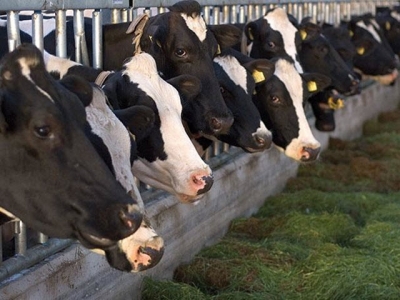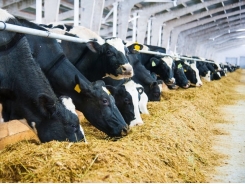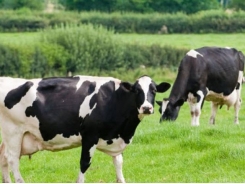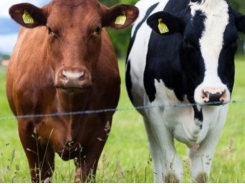Genomic prediction of service sire fertility in dairy cattle evaluated

Research serves as foundation for development of novel genomic strategies that can help dairy industry make better-informed decisions.
In dairy cattle, fertility is an important economic trait, but according to an abstract by J.P. Nani, M. Rezende and F. Peñagaricano with the University of Florida in Gainesville, Fla., bull fertility has been largely overlooked.
As such, the goal of research they conducted was to investigate the feasibility of genomic prediction of service sire fertility in Holstein and Jersey dairy cattle.
Sire conception rate (SCR) was used as a measure of sire fertility. The data set consisted of 11,500 Holstein and 1,500 Jersey bulls with SCR records and genome-wide single nucleotide polymorphism (SNP) data: 300,000 SNPs for Holsteins and 96,000 SNPs for Jerseys.
The analyses included the use of alternative linear kernel-based models. Predictive ability was evaluated using five-fold cross-validation with 10 replicates. The entire set of SNPs exhibited predictive correlations of 0.34 for Holsteins and 0.29 for Jerseys.
For Holsteins, five SNPs previously found to have marked dominance effects were fitted as fixed effects, increasing the predictive correlation to 0.40. In addition, promising results were found using functional genomic information (e.g., missense or 5′UTR SNP markers) with predictive correlations between 0.29 and 0.33.
For Jerseys, adding the entire Holstein population to the training set did not improve model predictive ability, the researchers said.
Overall, their findings, as reported at the American Dairy Science Assn. annual meeting, suggested that genomic prediction of dairy bull fertility is feasible. They noted that if the estimated predictive correlations is divided by the square root of SCR heritability, predictive accuracy of up to 0.73 was achievable. These accuracy values are higher than those obtained for some traits currently evaluated in U.S. dairy cattle, such as for calving ease and some health traits, they said.
“Our research is the foundation for the development of novel genomic strategies that help the dairy industry make accurate genome-guided decisions, such as early culling of predicted sub-fertile bull calves," Nani, Rezende and Peñagaricano noted.
Related news
Tools

Phối trộn thức ăn chăn nuôi

Pha dung dịch thủy canh

Định mức cho tôm ăn

Phối trộn phân bón NPK

Xác định tỷ lệ tôm sống

Chuyển đổi đơn vị phân bón

Xác định công suất sục khí

Chuyển đổi đơn vị tôm

Tính diện tích nhà kính

Tính thể tích ao




 Taking cow feeding to the next level
Taking cow feeding to the next level  Breed-level selection pressure may influence cattle immunity, color
Breed-level selection pressure may influence cattle immunity, color